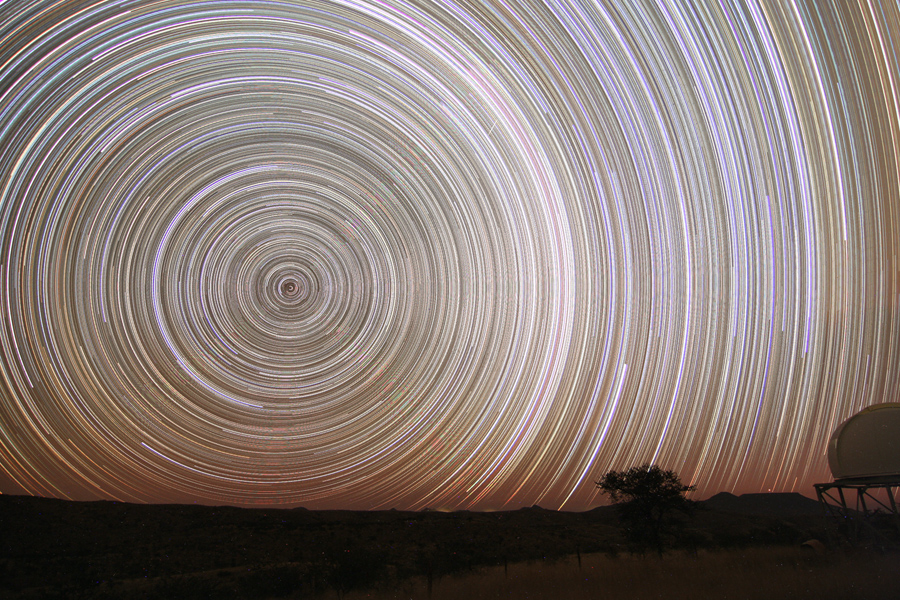
follow the handle to the dipper and find the stars "merak" and "duhbe" (pronounced "doobie"!). following these stars with your eyes from merak thru duhbe takes you in a nearly straight line to polaris... the "north star". while all stars rise in the east and set in the west... just like the sun... the north star stays stationary in our sky and all other stars rotate around it. thats why long exposure night time images when you use no tracking mechanism look like this...

that is an extreme example that was exposed for 11 hours!!!! but the effect of the long star trails is cool.
once you find polaris, you can try to identify the little dipper knowing that polaris is the last star in the handle of the little dipper. the stars are fainter so i always have a much harder time finding the little one, but it's a good challenge for a non-cloudy night and hopefully you can always determine which way is north!!











No comments:
Post a Comment